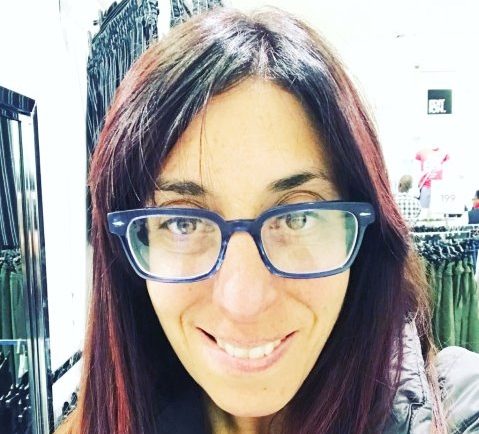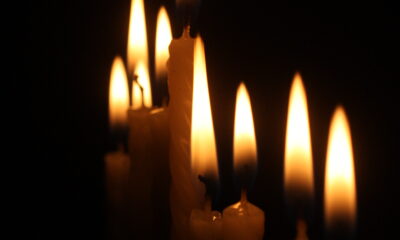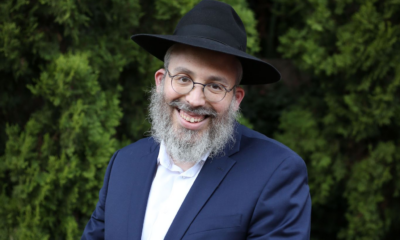
Parshot/Festivals

Lighting like Shammai – with tempered joy
And just like that, after a blessed four months in which the Jewish community of South Africa got married, had Batmitzvahs and Barmitzvahs, danced the Horah and celebrated in each other’s sukkot and in shuls, the numbers of COVID-19 infection have started to rise.
It’s not dramatic and we aren’t going into another lockdown just yet. But just as the colouring of the leaves in Autumn herald a change in season and mood, we are almost genetically programmed now to recognise the portend of an upswing in numbers.
We know that very soon, our freedoms might be curtailed. And this upswing in numbers is happening on the eve of our beautiful Chanukah, the holiday of light, hope, and triumph. How are we to relate to Chanukah when we are confronted with the vulnerability of our humanity and a sense of resignation that a fourth wave may be inevitable?
There is a great debate in the Talmud between the Mishnaic sages Hillel and Shammai around the lighting of the Chanukah candles. Shammai advised, contrary to current practice, that we should light our candles starting at eight and moving down towards one as we move through the eight days of Chanukah while Hillel (the victor of this particular debate), advised that we increase the numbers of our candles starting at one on night one, and moving up.
Hillel’s reasoning for his lighting pattern was as follows: “We always increase in holiness and we never decrease.” For Hillel, the light of the Chanukah candles signalled holiness and goodness. As an omen for our lives, why would we want to crystallise the Chanukah ritual by decreasing the light, by diminishing the good? Rather, Hillel taught, let’s increase the light.
As a Batmitzvah teacher, I have happily participated in many smachot over the past four months. I have seen kids dancing till late at night, only to get up the next day, tired but happy, and waltz off to the next Batmitzvah.
I have seen kids and parents hungry for the marrow of life, talking, dancing, and celebrating. The low COVID-19 numbers coupled with the incredible gift of vaccinations have afforded us a window into life as we once knew it. And live we have!
In Hillel-like fashion, we have been about the light, the light, and more light. We have almost tried to pretend that these horrible 18 months have been banished. As the virus resurges, we are in danger of a horrible fall in mood and spirit. This is where the way of Shammai, who advocated for the light of descent, can assist.
The reason Shammai offers for lighting in descending sequence isn’t initially clear. He explains that it’s because of parei he’chag (the bullocks of the festival). Rashi clarifies that these bullocks were the bulls which were usually offered as sacrifices in the Temple on Sukkot. Like Shammai’s candles, they were offered in descending order, from 13 on the first day to 11 on the last, numbering a total of 70, which corresponded symbolically to the 70 nations of the world.
In the year of the actual story of Chanukah, the Greeks had monopolised the Temple and so there had been no temple offerings over Sukkot. The parei he’chag had simply not happened. So Shammai was saying, let’s light the candles of Chanukah, not in pure triumph and not in pure celebration of the light that increases, but in some kind of nod towards lost opportunities.
Linked into Shammai’s notion of lighting in descending order is that even when there’s light and hope, there can still also be loss, grief, and mourning.
Sometimes, the light and the dark need to co-exist. This harks back to Gerard Manley Hopkins’ poem, Glory be to G-d for dappled things. The word “dappled” is the light that pops up among the shadows. It’s the light that’s muted or tempered by the shade. It isn’t glaring, unadulterated light, it’s the light of joy that dares to also feel sorrow.
As I see it, Shammai’s light is the more common light experienced in our lives, the light that is accompanied by the awareness of a recent terror attack, the light that holds in it illness, divorce, or emigration, the light that feels gratitude alongside disappointment.
These past few months have been characterised by a longing to forget, to forget that we have a pandemic, to obscure that for the next while our lives will continue to be governed by waves, to forget that though vaccines are an incredible game-changer, they haven’t sweep this virus away … yet!
However, we can take strength from Shammai who said that sometimes, we light our candles in the shadow of loss. We can remember loss or hold light that is adulterated and mixed, tempered with other things. Sometimes, we light Chanukah candles according to Hillel, and we celebrate all the light in the world. Sometimes we light like Shammai, with hope in our hearts and awareness that we aren’t there yet.
Regardless, we light the Chanukah candles, and take heart for “Glory be to G-d for dappled things”.
- Adina Roth is a clinical psychologist in private practice, and a teacher of Jewish Studies.











Romsine
November 26, 2021 at 6:56 pm
Lighting in the shadow of loss.
Always
EveryShabbat
Stay strong
Thanks for the blog
So thoughtful